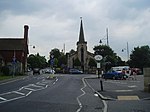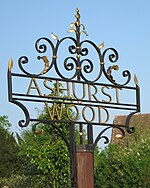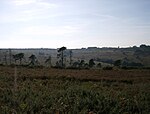Michael Hall (school)
Michael Hall is an independent Steiner Waldorf school in Kidbrooke Park on the edge of Ashdown Forest in East Sussex. Founded in 1925, it is the oldest Steiner school in Britain, and has a roll of 400 students aged between three (kindergarten) and eighteen (6th Form). The school owns a large amount of land.The school offers a broad education to boys and girls from pre-school to university entrance, based on the educational philosophy of Rudolf Steiner. The curriculum embodies cultural studies, sciences, general arts and humanities, crafts, music and movement and foreign languages. EFL is available in term time. The school explains its educational ethos, curriculum and approach to prospective parents at open mornings. A range of sports, games and extra-curricular activities is offered. Entrance is non-selective and there is no streaming; for sixth-form entry an interview is conducted and GCSE grade C (or preferably higher) is required in selected sixth-form subjects.
Excerpt from the Wikipedia article Michael Hall (school) (License: CC BY-SA 3.0, Authors).Michael Hall (school)
Wealden Forest Row
Geographical coordinates (GPS) Address Phone number Website External links Nearby Places Show on map
Geographical coordinates (GPS)
| Latitude | Longitude |
|---|---|
| N 51.0915 ° | E 0.0244 ° |
Address
Michael Hall School
RH18 5JA Wealden, Forest Row
England, United Kingdom
Open on Google Maps








